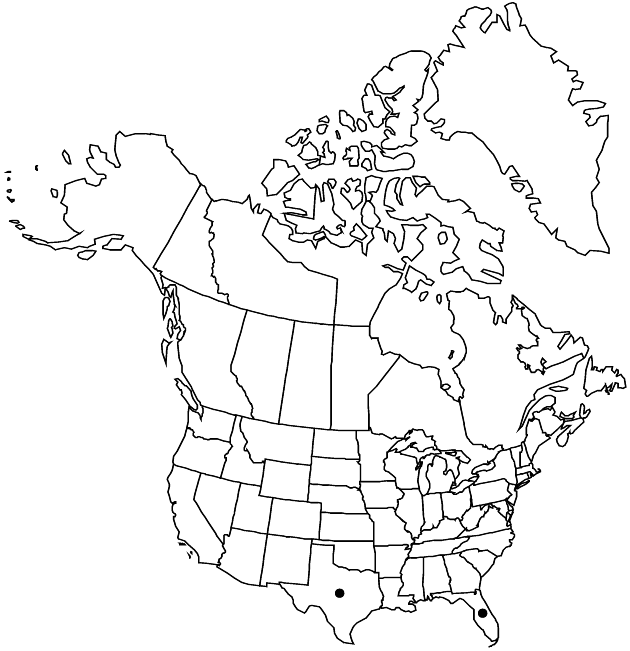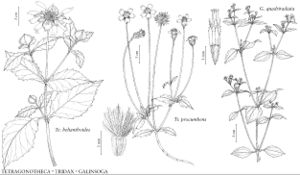Difference between revisions of "Tridax procumbens"
Sp. Pl. 2: 900. 1753.
WeedyIntroducedIllustrated
Treatment appears in FNA Volume 21. Treatment on page 180.
imported>Volume Importer |
imported>Volume Importer |
||
| Line 58: | Line 58: | ||
|publication year=1753 | |publication year=1753 | ||
|special status=Weedy;Introduced;Illustrated | |special status=Weedy;Introduced;Illustrated | ||
| − | |source xml=https:// | + | |source xml=https://bitbucket.org/aafc-mbb/fna-data-curation/src/2e0870ddd59836b60bcf96646a41e87ea5a5943a/coarse_grained_fna_xml/V19-20-21/V21_441.xml |
|tribe=Asteraceae tribe Heliantheae | |tribe=Asteraceae tribe Heliantheae | ||
|subtribe=Asteraceae (tribe Heliantheae) subtribe Galinsoginae | |subtribe=Asteraceae (tribe Heliantheae) subtribe Galinsoginae | ||
Latest revision as of 20:12, 5 November 2020
Leaves: petioles 1–10(–30) mm; blades 10–40(–120) × 5–20(–60) mm, often 3-lobed. Cypselae 2–2.5 mm; pappi 4–5(–7.5) mm. 2n = 36.
Phenology: Flowering Jan–Dec.
Habitat: Disturbed sites
Elevation: 0–10 m
Distribution

Introduced; Fla., Tex., Mexico.
Discussion
Tridax procumbens is listed as a noxious weed for United States and is listed as a pest or noxious weed for nine or more states.
Selected References
None.
Lower Taxa
None.
